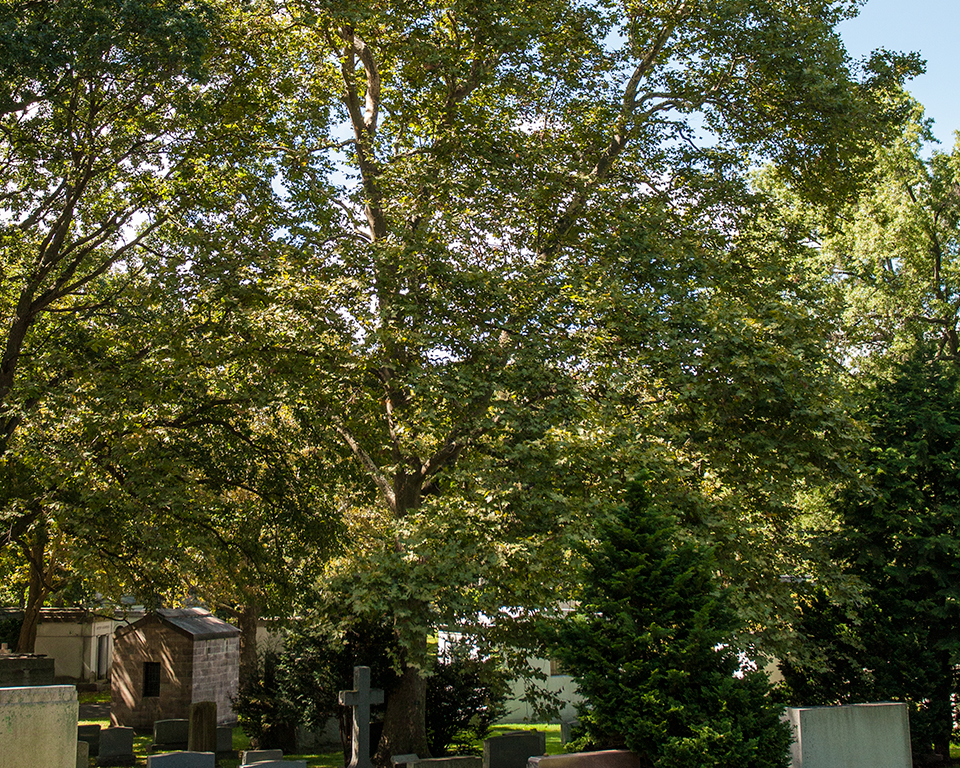PLATANUS OCCIDENTALIS – SYCAMORE, AMERICAN

This tree is simply too large and messy for most residential landscapes unless you are desperate for shade and have lots of spare time to rake mountains of leaves. They are best suited for soils which are moist and do not dry out. Dry soil can lead to short life for this wet-site-tolerant tree.
Sycamore has been cursed by horticulturists and others because it is said to be messy, dropping bark, leaves and small twigs throughout the year, particularly in dry weather. However, the tree grows in places which appear most unsuitable to plant growth, such as in small cut out planting pits in sidewalks and in other areas with low soil oxygen and high pH. Unfortunately, aggressive roots often raise and destroy nearby sidewalks. Allow at least 12 feet
(preferably more) of soil between the sidewalk and curb when planting as a street tree.
Sycamore is subject to attacks of anthracnose in wet, cool springs. This disease causes a severe witches broom
(proliferation of branches) on the ends of the branches and defoliates the plant, especially in northern end of its hardiness range. Trees compartmentalize decay fairly well and resists breakage. Planetrees are among those susceptible to summer branch drop according to surveys in California. Summer branch drop is a phenomena resulting in failure and breakage of large diameter, live branches typically on calm summer days. Wood weighs about 50 pounds per cubic foot.
Consider planting Baldcypress instead of Sycamore for fast shade; and you will not have to rake leaves because Baldcypress foliage drops freely between grass blades and goes largely unnoticed on most landscape surfaces. Rain water washes Baldcypress foliage away on hard surfaces. Pollen causes significant allergies in certain people. Contact with the leaves causes skin rashes.
Wood is considered diffuse porous meaning that there is little difference in size of pores between spring and summer wood.

